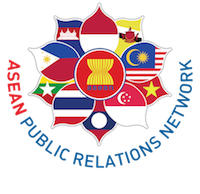In 2009, a Domino Pizza employee in United States, was seen assembling sandwiches, spraying snot on them, sticking cheese up his nose before placing it on a piece of bread and passing gas on a slice of salami. This stomach-turning video clip was uploaded on You Tube and went viral on social media creating a crisis for the company. Initially, the company thought it would go away but later decided to respond effectively to the situation.
More recently, Volkswagen faced a major crisis when United States regulators found that the manufacturer has incorporated a device in its diesel cars to cheat during emission tests. In Singapore, VW had sought to reach out to its customers one month later but it did not appear to appease the customers.
Effective communications within the first few hours of a crisis can define the event and frame the context in which it is judged. Therefore, every organisation should be well prepared to manage crisis communications.
Here are a few important points to remember when communicating in a crisis:
- Provide speedy communication – Speed in communication is essential in today’s highly connected world. Organisations should issue a statement within an hour of the crisis and take control of the situation. The first photo of the Asiana Airlines crash in San Francisco was tweeted 30 seconds after the incident. The first photo from a passenger who got off the plane was uploaded, with commentary, 18 minutes after the crash. Asiana however took more than four hours to update its Twitter and Facebook pages and another two hours to issue its first statement. Such slow response affected their brand reputation.
- Contain the crisis physically and emotionally – Physical containment could be in various ways, for example recalling a faulty product from the market or withdrawing the product from the shelves. Emotional containment is more challenging. You have to consider the emotions and concerns of the people affected by the crisis. Providing correct and timely information could help to contain the crisis emotionally.
- Take your responsibilities seriously – You have to first determine your level of crisis responsibility. Is it a low or strong crisis responsibility? Your communication should factor this responsibility while balancing legal concerns. An apology to your stakeholders and public may be required especially if your organisation is at fault. Domino’s apology, though delayed, was well crafted with empathy and taking responsibility for the incident.
- Be open and transparent – Sharing information, and being open and transparent conveys that the organisation could be trusted. Communicating as much information as possible helps to strengthen your relationship with the key stakeholders. In Singapore, the government’s open and transparent communication through daily press statements and press conferences during the SARS crisis in 2003 helped tremendously to manage the emotions and fears of the population.
- Show genuine concern and compassion for people – Communicating with empathy is absolutely essential. You have to place people above assets. It does not matter what is the cost of damage or lost business. You should focus on the impact of the crisis on consumers, employees, investors, suppliers, government and many other key stakeholder groups.
When a crisis hits you, communicate effectively during and after the incident, especially within the first few hours. It will enhance your reputation, strengthen your relationship with key stakeholders, create goodwill and contribute to the long-term mission of the organisation.
K Bhavani is a Board Member of APRN and the Managing Director of International PR Training Pte Ltd. Find out more about courses on crisis communications and public relations – visit www.prtraining.sg or email info@prtraining.sg.






